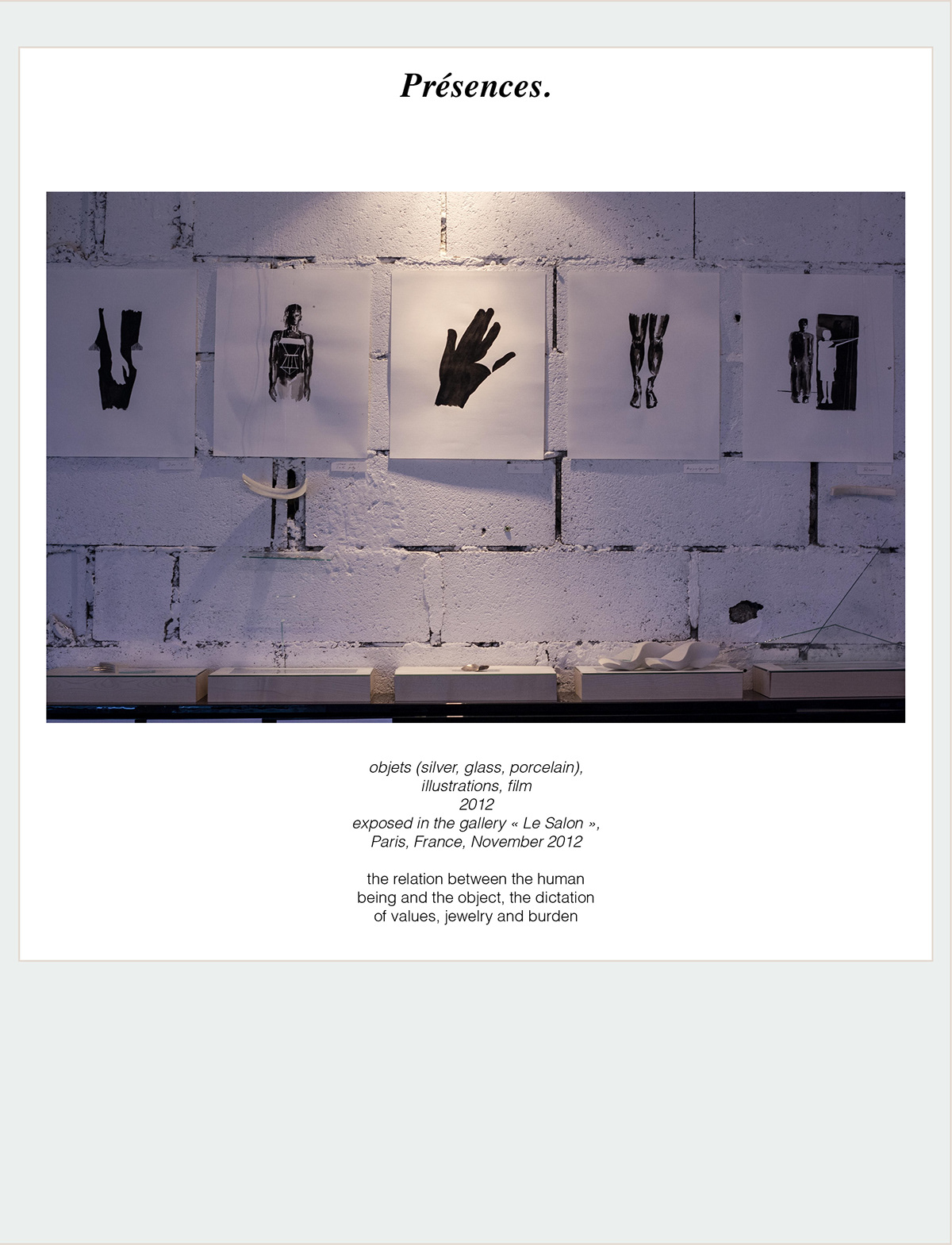


Présences.
Relation / determination / compulsion / purpose :
human – human / human – object / object – human / object – object
human: "a person" / Homo Faber / Animal Symbolicum
being, being-just-being, being-in-society, being-for-another-being, being-on-purpose, being-wrong, being-right, being-good, being-bad, being-to-give, being-to-take, being-to-live,
self-awareness, self-reflection, inner perception, individual cognition, external assessment, judgement, disguising, consumption, conformation, liberation, restriction, valuation,
personalities: time – identity – place,
object: “a thing“
defining the human within creation and valuation,
not-being, non-being, only-being-if-perceived, never-for-itself, in desperate need of the human,
to serve, to have-sense, to act, to define, to be consumed, to be evaluated, to be adored, to be formed, to be informing, to be judging, to be restricting, to be hiding, to be liberating, to be determining, to be,
reflection of personalities: time – identity – place,
Internal logic:
A human can create objects, but objects can´t create themselves.
A human can be without an object, but an object can´t be without a human.
A human can be an object, but an object can never be human.
An object can exist outside of reality, a human is always real.
An object is always an inscription of information, provided by the human/s that created the object (consciously or unconsciously).
A human can dictate human/s.
A human can dictate objects and objects can dictate human/s, as they were created by humans.
A human can reflect on human/s.
A human can reflect on objects and objects can reflect on human/s, as they are an inscription of the information of some human/s.
QED
lisa / says: within my work, I question the common standards of social behaviour, valuation, property and self-determination within the different relations in-between humans and objects.
Also „Presences.“ is located with this theme. The shown objects are part of a still-in-progress series that is supposed to be classified as jewellery, but to question the sense of decorative objects. They are objects with value (as they were labeled ”jewellery” - made of precious materials such as porcelain, silver, and glass - shown in a gallery and are for sale at a certain amount), but without purpose. Even worse: they force the human to behave a certain way or he/she would be injured and they would be destroyed (again: the precious, fragile materials play a main role). They make the human feel himself/herself again within the boundaries provided by the objects. The human is conscious of his/her being-there, but this possibility is only provided by the determination of the being. At the same moment, the objects reflect on behaviour within society, certain rules, invisible, but present. So these objects might be without purpose, but not without sense. They are objects with a subject that can be read through usage. The interaction with the human body distributes certain inscribed information and questions, such as: Are the objects additions to the body or is the human an addition to the objects? Are the objects serving the human or is the human serving the objects? Does the human give up his/her own identity to be with an object? Will there be an act of liberation (so: destruction) on cost of the object and it´s implemented value? How does a human treat objects in relation to their worth (personal/financial)? Why are humans attached to objects? Which kind of information is inscribed in objects? How can the human read those?
Keywords: etiquette, property as burden, the overpopulation of things, homo creator
thanks to Małgośka, Sacha, Dan, Oyèmi, Nietzsche and Greece


